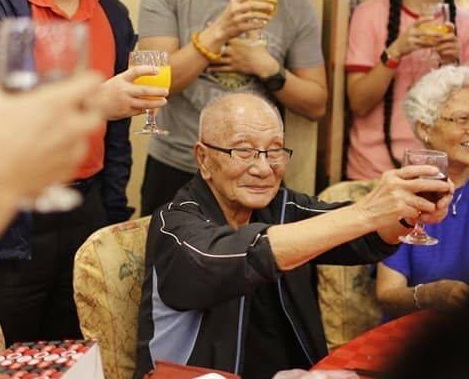Wing Chun for Older Adults: Maintaining Mobility and Agility
By Maurice Novoa a master under the Yuen Kay Shan, Ip Man and Pan Nam lineages.
Introduction:
As we age, it becomes increasingly important to prioritize our physical and mental well-being. Regular exercise is a key component of a healthy lifestyle, and martial arts can offer numerous benefits for older adults. Wing Chun, a Chinese martial art known for its practicality and efficiency, is particularly well-suited for older individuals looking to maintain their mobility and agility.
In this article, we will explore the benefits of Wing Chun for older adults and discuss key principles, techniques, and training tips to help seniors incorporate this martial art into their fitness routine.
What is Wing Chun?
Wing Chun is a martial art that originated in southern China and was developed by five elders of the Shaolin Monastery. It focuses on using structure, positioning, and efficient movements to overcome larger and stronger opponents. The techniques emphasize close-range combat, utilizing quick punches, kicks, and trapping techniques to neutralize attacks effectively.
Benefits for Older Adults
Improved Mobility and Flexibility
One of the primary concerns for older adults is maintaining mobility and flexibility. Wing Chun training involves a range of movements that promote joint mobility and flexibility. Through regular practice, seniors can improve their range of motion, reducing the risk of injuries and enhancing their overall mobility.
Enhanced Balance and Coordination
Balance and coordination tend to decline with age, leading to an increased risk of falls and injuries. Wing Chun’s emphasis on maintaining a strong centerline and stable stances helps improve balance and coordination. The precise footwork and body positioning help older adults develop a strong foundation and regain stability.
Increased Mental Focus and Cognitive Abilities
Wing Chun requires mental focus and concentration, which can have significant benefits for older adults. By practicing this style, seniors can sharpen their cognitive abilities, enhance their reflexes, and improve their overall mental well-being. The art’s focus on mindfulness and body awareness also helps seniors stay mentally engaged and present in the moment.
Key Principles of Wing Chun
Centerline Theory
Centerline theory is a fundamental principle in Wing Chun. It involves positioning yourself along the imaginary centerline of your opponent, allowing for direct attacks while maintaining a strong defensive position. This principle enables older adults to minimize unnecessary movements and conserve energy during self-defense situations.
Economy of Motion
Wing Chun emphasizes efficiency and economy of motion, making it ideal for older adults. The techniques focus on using the least amount of movement to achieve maximum results, enabling seniors to generate power without exerting excessive physical effort. This principle is particularly beneficial for those with age-related limitations.
Wing Chun Techniques
Sil Lim Tao
Sil Lim Tao is the foundational form of Wing Chun. It consists of a series of precise movements and positions designed to develop proper structure, balance, and relaxation. Practicing Sil Lim Tao helps older adults cultivate body awareness and lay the foundation for more advanced techniques.
Chum Kiu
Chum Kiu builds upon the foundation established in Sil Lim Tao. This form introduces dynamic footwork, body shifting, and coordinated movements. It helps older adults develop fluidity, adaptability, and the ability to generate power from different positions.
Biu Jee
Biu Jee is the third form in Wing Chun and focuses on advanced techniques for close-quarters combat. While it requires more physical exertion, older adults can modify the movements to suit their capabilities. Biu Jee training challenges seniors to refine their techniques and adapt to different scenarios.
Training Tips
Warm-up Exercises
Before engaging in any physical activity, it’s essential for older adults to warm up their bodies. Perform gentle stretches, joint rotations, and light cardiovascular exercises to prepare the muscles and minimize the risk of injuries.
Practice with a Partner
Partner drills are crucial for Wing Chun training. Older adults should find a reliable training partner and practice various techniques together. This not only adds an element of fun and social interaction but also helps seniors develop their timing, reflexes, and application of techniques in a controlled environment.
Modify Techniques for Age-related Limitations
Older adults may have specific physical limitations or health concerns. It’s important to work with a qualified Wing Chun instructor who can tailor the training to accommodate individual needs. Techniques can be modified to suit the abilities and comfort levels of older practitioners, ensuring a safe and enjoyable experience.
Importance of Regular Practice
Consistency is key when it comes to reaping the benefits of Wing Chun. Older adults should strive for regular practice, ideally several times a week. Through consistent training, seniors can maintain and improve their mobility, agility, and overall fitness. It’s important to start at a comfortable pace and gradually increase the intensity and duration of practice to avoid overexertion.
Conclusion
Wing Chun offers older adults an engaging and effective way to maintain their mobility and agility. With its focus on practical self-defense, efficiency of movement, and mental discipline, Wing Chun can provide numerous physical and mental benefits for seniors. By incorporating the key principles, techniques, and training tips outlined in this article, older adults can embark on a rewarding journey of martial arts practice that enhances their overall well-being.

